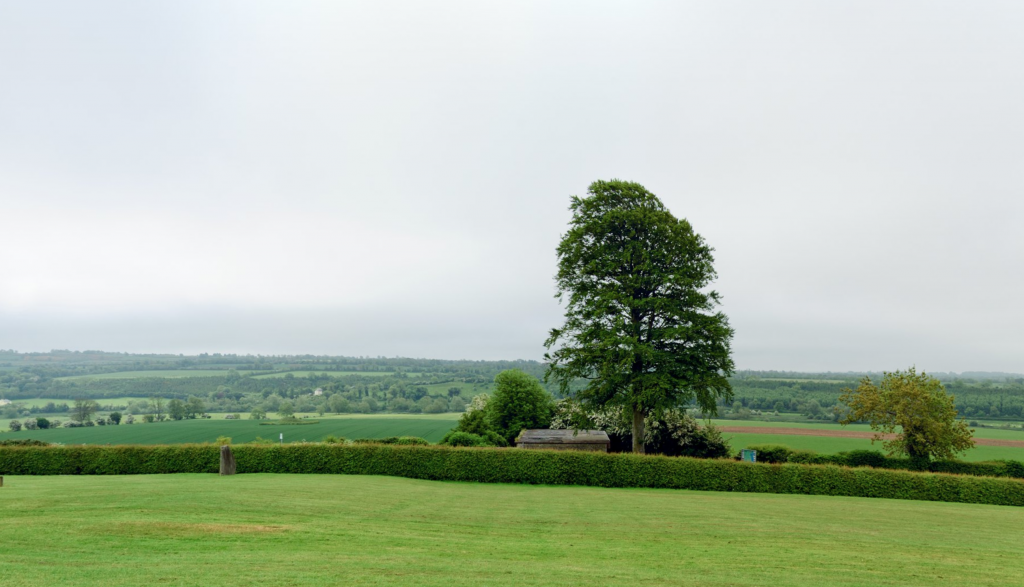As I was able to experience Dublin’s beautiful landmarks, I was particularly struck by the landscapes’ ability to invoke specific emotions. With fields extending far into the distance, Dublin’s vast greenery inspires me to embrace nostalgia and self-reflection.

As seen when experiencing the view from Newgrange’s Outlier Stone, the terrain is beautiful and seems to be never-ending. When first experiencing this view, I immediately felt nostalgic from the open space and vibrant greenery. I was in fact taken back to the days of Jane Austen’s literature, in which countless individuals went on walks during the daytime during beautiful, sun-filled mornings.
This feeling of nostalgia is best encompassed in Eavan Boland’s “That the Science of Cartography is Limited” when he says, “When you and I were first in love we drove to the borders of Connacht and entered a wood there.” He remembers the past feeling of new love simultaneously with the Irish landscape. As a result, the countryside and nature are closely intertwined with emotions, ranging from love to fond remembrance of the past.

However, the Wicklow Mountains’ landscape is darker and more dreary in comparison to that of Newgrange. In contrast to the bright vastness that was mentioned earlier, this landscape is eerily never-ending. Even more so, this lower angle shows little of the road, bringing an ominous quality to it. Yet, its vastness still entices viewers to enter into its history and become quite curious about its stories.
Boland points to a landscape’s ability to reflect historical stories of struggle and deep adversity, as evident when he mentions the famine roads to aid starving Irish individuals. His closing words point to “the line which says woodland and cries hunger.” In juxtaposing “woodland” with the desperate feeling of “hunger” nature is closely tied with the human emotions of longing and sadness. Wicklow Mountains’ dreary features can correlate with the dreary hopelessness that many Irish men and women felt in their times of starvation.
When experiencing these beautiful landscapes– whether cheerful or gloomy– my thoughts were suddenly shifted inwards as I self-reflected upon my own thoughts and emotions. I felt excitement and joy, yet at other times I felt cautious and displaced. These journeys not only captured my attention, but they also captured my mind and heart as I became overwhelmed by the emotion that each landscape inspired within myself.

Hi, Kaitlyn. The unboundedness and freedom of Ireland’s scenery also made me quite nostalgic. Like you, I can easily picture Austen’s Elizabeth Bennet or Marianne Dashwood meandering through fields like these in nearby England. You’re quite right to pick up on the drearier aspects of the Wicklow Mountains. In my post, I discussed these desolate hills as a modern sight for disappearances, for it has consistently been voted Ireland’s top place to dispose of a body…very creepy!